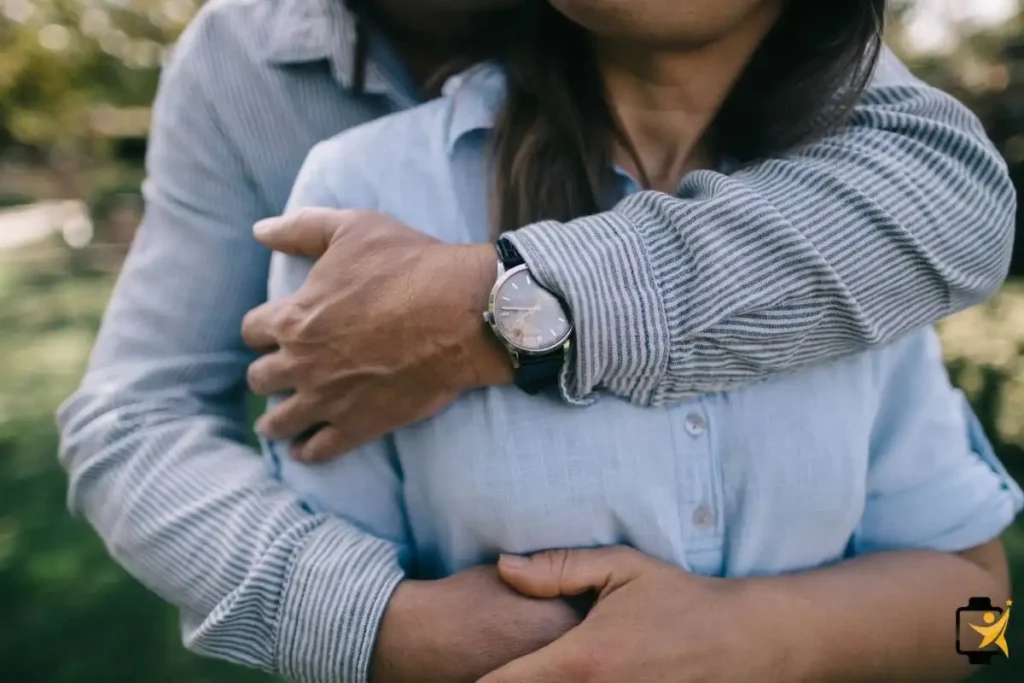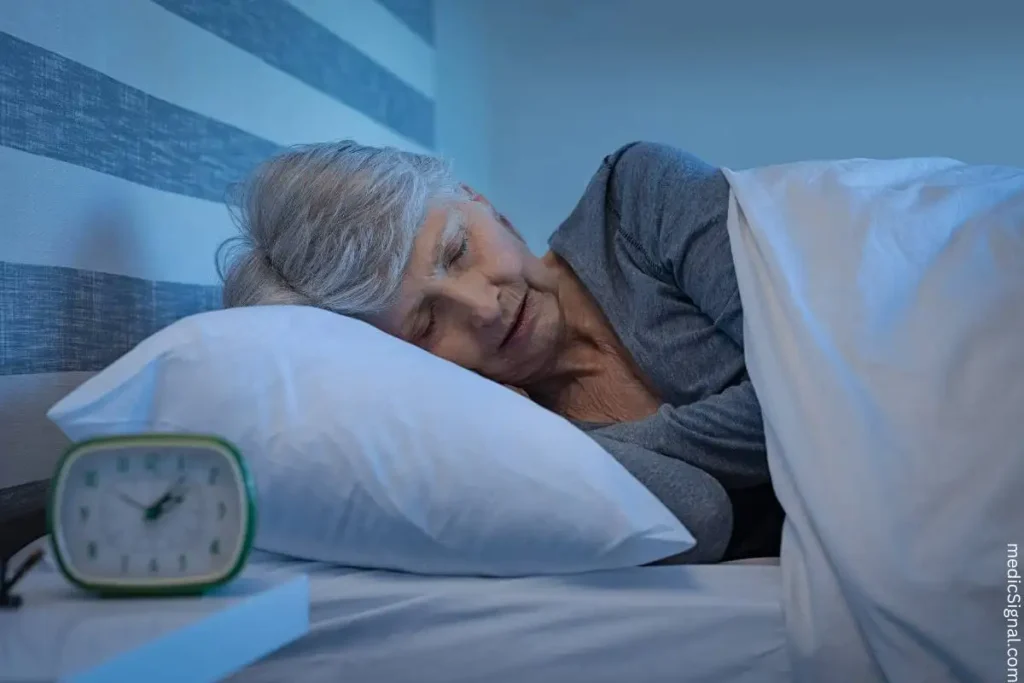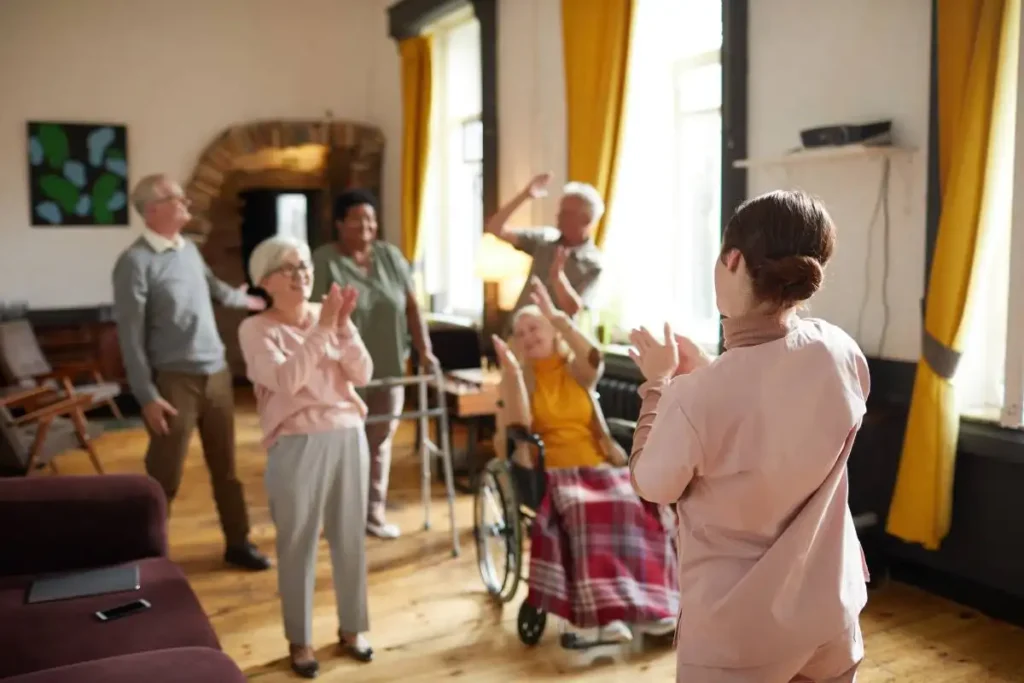Creating a safe environment for seniors is crucial. As we age, the risk of accidents at home increases, making it essential to address potential hazards.
A room-by-room approach allows for a thorough assessment of each area in the home, focusing on specific safety measures tailored to different spaces.
This guide aims to highlight important safety tips for every room, ensuring peace of mind for both seniors and their loved ones.
Living Room Safety
Common Hazards in the Living Room
The living room, often a central gathering space, can pose several hazards for seniors. Common risks include cluttered walkways, loose rugs, and low furniture. These elements can create trip hazards that increase the likelihood of falls.
Tips for Reducing Fall Risks
To minimize the risk of falls, consider the following tips:
- Keep pathways clear of furniture and clutter.
- Use non-slip mats under rugs to prevent slipping.
- Ensure all items are within easy reach to avoid stretching or climbing.
Furniture Arrangement for Safety
Proper furniture arrangement can significantly enhance safety. Aim for:
- Arranging furniture to allow for wide pathways.
- Positioning chairs and sofas to provide support when getting up.
- Choosing sturdy furniture that is easy to get in and out of.
A few simple adjustments can make a big difference in ensuring the living room is a safe and comfortable space for seniors.
Kitchen Safety
In the kitchen, safety is paramount, especially for seniors. This space can be filled with potential fire hazards, such as unattended cooking and flammable materials.
Always keep a close watch on cooking appliances and ensure that flammable items are stored away from the stove.
“A safe kitchen is key to ensuring comfort and independence for seniors.”
Using kitchen appliances safely is essential. Make sure that appliances are in good working condition and that seniors are familiar with how to operate them. Encourage the use of tools like electric can openers and lightweight cookware to reduce strain.
Organizing kitchen tools can also enhance safety. Keep frequently used items within easy reach to avoid stretching or bending. Consider using drawer organizers or magnetic strips for utensils, ensuring everything has a designated spot. This not only promotes safety but also makes cooking more enjoyable.
By taking these precautions, you can create a safer kitchen environment that supports independence and confidence.
Bathroom Safety
Ensuring safety in the bathroom is crucial for seniors. This area can be particularly hazardous due to wet surfaces and slippery floors.
One of the simplest yet most effective solutions is to use non-slip mats. These mats provide traction and help prevent falls, especially near the shower or bathtub.
Another important safety feature is the installation of grab bars and the use of shower chairs. Grab bars offer support when getting in and out of the shower, while shower chairs provide a safe place to sit while bathing.
Here’s a quick comparison of different grab bar options:
| Grab Bar Type | Material | Weight Capacity |
|---|---|---|
| Wall-Mounted | Stainless Steel | 300 lbs |
| Floor-To-Ceiling | Aluminum | 500 lbs |
| Portable | Plastic | 250 lbs |
Proper lighting also plays a vital role. Bright, adjustable lighting can help seniors see better and avoid accidents. Consider using night lights to illuminate pathways and areas that may be darker.
By implementing these safety measures, you can create a more secure bathroom environment that promotes confidence and independence for seniors.
Bedroom Safety
Creating a safe bedroom is essential for seniors. A secure environment promotes better sleep and reduces the risk of accidents. As you make adjustments, keep the following points in mind:
“A safe bedroom is the foundation for a good night’s sleep and peace of mind.”
- Bed height: Ensure the bed is an appropriate height for easy access. If it’s too high or too low, consider using risers or a new mattress.
- Eliminating tripping hazards: Keep pathways clear by removing clutter, cords, and any obstacles that could cause trips. Area rugs should be secured to the floor to prevent slipping.
- Night lighting solutions: Install night lights to illuminate the path from the bed to the bathroom. Motion-sensor lights can also provide added convenience and safety.
By implementing these safety measures, you can create a bedroom that fosters comfort and security for seniors.
Staircase Safety
Staircases can pose significant risks for seniors. Ensuring their safety is crucial for preventing falls. Here are some essential features to consider for staircase safety:
- Installing handrails: Handrails provide support and stability while navigating stairs. Ensure they run the entire length of the staircase and are securely fastened.
- Ensuring proper lighting: Adequate lighting is vital. Install bright lights above the stairs and consider using motion-activated lights for convenience.
- Carpet vs. non-slip treads: Choose the right surface for your stairs. Below is a comparison to help you decide:
| Feature | Carpet | Non-Slip Treads |
|---|---|---|
| Comfort | Soft and cushioned | Firm surface |
| Maintenance | Requires regular cleaning | Easy to clean |
| Slip Resistance | May be slippery when wet | Designed to prevent slipping |
By implementing these measures, you can significantly enhance staircase safety, making it easier for seniors to navigate their homes.
Outdoor Safety
Pathway Maintenance
Maintaining clear and safe pathways is essential for seniors. Regularly inspect walkways for cracks, uneven surfaces, or overgrown vegetation.
Keeping paths free of debris, such as leaves or snow, can prevent slips and falls. Consider using materials that provide good traction, even when wet.
Lighting for Security
Proper lighting enhances safety and security outdoors. Install bright lights along walkways and near entrances to improve visibility at night.
Motion-activated lights are a great option, as they illuminate areas when someone approaches, minimizing the risk of accidents. Ensure all outdoor lights are in working order and replace burnt-out bulbs promptly.
Garden Safety Tips
Gardening can be a rewarding activity, but safety should come first. Use raised garden beds to avoid bending and straining. Keep tools organized and stored away when not in use. If using a ladder, ensure it’s stable and on level ground. Lastly, stay hydrated, especially during hot weather.
Garage and Basement Safety
Garages and basements can pose unique safety challenges for seniors. Proper organization plays a crucial role in creating a safer environment.
Use shelves and bins to keep items off the floor. This minimizes clutter and reduces tripping hazards.
“A well-organized garage can prevent accidents and make daily tasks easier for seniors.”
When it comes to tools, safety is paramount. Ensure that all tools are stored securely and out of reach if not in use.
For those that need to be accessed regularly, consider using toolboxes with easy-to-open lids. Always check that tools are in good condition, as damaged tools can lead to accidents.
Fire prevention is another key aspect. Keep flammable materials, like paint and solvents, stored away from heat sources. Install smoke detectors and check their batteries regularly. Having a fire extinguisher nearby is also a good idea. These simple steps can significantly enhance safety in the garage and basement.
Entryway Safety
The entryway is the first line of defense when it comes to senior home safety. Ensuring a secure entrance helps prevent unwanted visitors while providing peace of mind. Key safety features include:
- Secure locks and peepholes
- Lighting for visibility
- Non-slip mats
Secure locks are essential. Consider upgrading to high-quality deadbolts or smart locks for added security. Here’s a quick comparison of different lock types:
| Lock Type | Security Level |
|---|---|
| Standard Deadbolt | Moderate |
| Smart Lock | High |
| Keypad Lock | Moderate to High |
Good lighting is equally important. Ensure the entryway is well-lit to enhance visibility during nighttime. Motion-sensor lights can be a great option, illuminating the path as someone approaches.
Finally, placing non-slip mats at the entrance can help prevent falls. They provide traction and absorb water, keeping the area safe during rainy or snowy weather. Simple adjustments can make the entryway significantly safer for seniors.
Fire Safety Measures
Fire safety is crucial in maintaining a secure home environment for seniors. Proper precautions can save lives and minimize damage.
Here are some essential measures to consider:
- Smoke detectors: Install smoke detectors on every level and inside each bedroom. Test them monthly and replace batteries at least once a year.
- Fire extinguisher placement: Keep fire extinguishers in easily accessible locations, such as the kitchen and near exits. Ensure that everyone in the home knows their locations.
- Escape plan preparation: Develop a clear escape plan. Identify two exits from each room and practice the plan regularly with all family members.
“Being prepared for a fire can make all the difference when seconds count.”
By implementing these fire safety measures, you can create a safer living environment for seniors. It’s not just about having the right equipment, but also fostering a culture of awareness and readiness.
Home Security
Alarm Systems
Alarm systems are essential for protecting seniors at home. They provide peace of mind by alerting homeowners to any suspicious activity.
Many modern systems offer remote monitoring, allowing family members to check in on their loved ones from anywhere.
| Type | Features | Cost |
|---|---|---|
| Wired Systems | Reliable, hardwired connections | $$ |
| Wireless Systems | Easy installation, mobile alerts | $$$ |
| Smart Alarm Systems | Integrates with smart home devices | $$$$ |
Surveillance Cameras
Installing surveillance cameras enhances security. These devices deter potential intruders and allow for monitoring of activities around the home. Many cameras now offer motion detection and video storage for added safety.
Neighborhood Watch Benefits
A neighborhood watch program can foster community safety. By keeping an eye on each other’s homes, neighbors can collaborate to prevent crime. Engaging with local residents creates a supportive environment for seniors.
With these security measures in place, seniors can feel safer and more connected in their homes.
Technology for Safety
Incorporating technology into senior home safety can significantly enhance their wellbeing. Emergency contact devices, like personal alarms, allow seniors to reach help quickly.
These devices are often lightweight and easy to wear, providing reassurance for both seniors and their families.
Smart home features have also gained popularity. From smart locks to automated lighting, these devices help seniors manage their environment easily. Imagine lights that turn on automatically when someone enters a room, ensuring safer navigation at night.
“Technological advancements have opened new doors for improving senior safety at home.”
Medical alert systems are crucial for immediate assistance. These systems typically come with a wearable button that connects the user directly to emergency services.
Many options now include fall detection technology, which automatically alerts help if a fall is detected.
By leveraging these technologies, seniors can maintain independence while ensuring their safety and peace of mind in their homes.
FAQs on Senior Home Safety
Addressing common questions can help improve senior home safety. Here are a few frequently asked questions and their answers:
Q: What are the most important safety features for a senior home?
A: Key features include proper lighting, non-slip surfaces, and grab bars in bathrooms. These elements greatly reduce the risk of falls.
Q: How can I make my kitchen safer?
A: Keep frequently used items within easy reach and ensure all appliances are in good working order. Remember to check for fire hazards.
Q: What’s a quick way to enhance safety?
A: Implement these quick tips:
- Install night lights in hallways and bedrooms.
- Remove clutter from walkways.
- Ensure all rugs have non-slip backing.
- Use a shower chair for stability in the bathroom.
Taking these steps can make a significant difference in ensuring a safe and comfortable living environment for seniors.
Conclusion
Ensuring safety in a senior’s home involves taking proactive steps throughout every room. From reducing fall risks in the living room to enhancing kitchen and bathroom safety, each area plays a vital role. Simple changes, like adding grab bars or improving lighting, can have a lasting impact.
Embrace the opportunity to make these adjustments. By doing so, you create a safer and more comfortable environment for loved ones. Every small change counts toward a more secure home.





